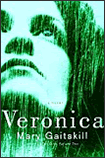“The people who were video game players were better and faster performers,” said psychologist Ellen Bialystok, a research professor at York University. “Those who were bilingual and video game addicts scored best — particularly at the most difficult tasks.”
According to a story in The Globe and Mail on February 9th, 2006, research at York shows that playing video games has a similar effect on mental abilities as bilingualism. The story by Carolyn Abraham, Better living through video games?, is based on research by Professor Bialystok that will be published in the Canadian Journal of Experimental Biology. The research looked at 100 university students in Toronto.
Prof. Bialystok suspects video gamers, like bilinguals, have a practised ability to block out information that is irrelevant to the task at hand.
This explains why my kids don’t hear me calling them for dinner.
Continue reading Mental agility and video games
 Joanne, my hard cover muse, lends me books that win prizes (or almost win.)
Joanne, my hard cover muse, lends me books that win prizes (or almost win.)  Can a camera caress water? Anh Hung Tran is a Vietnamese director whose slow delicate movies seem less stories than excuses to collect drops of leaves. I’ve now seen
Can a camera caress water? Anh Hung Tran is a Vietnamese director whose slow delicate movies seem less stories than excuses to collect drops of leaves. I’ve now seen 



